RNF213 Variants, Vasospastic Angina, and Risk of Fatal Myocardial Infarction
JAMA Cardiology
JUNE 17, 2024
This genetic association study evaluated genetic variants associated with increased risk of vasospastic angina.
This site uses cookies to improve your experience. To help us insure we adhere to various privacy regulations, please select your country/region of residence. If you do not select a country, we will assume you are from the United States. Select your Cookie Settings or view our Privacy Policy and Terms of Use.
Cookies and similar technologies are used on this website for proper function of the website, for tracking performance analytics and for marketing purposes. We and some of our third-party providers may use cookie data for various purposes. Please review the cookie settings below and choose your preference.
Used for the proper function of the website
Used for monitoring website traffic and interactions
Cookies and similar technologies are used on this website for proper function of the website, for tracking performance analytics and for marketing purposes. We and some of our third-party providers may use cookie data for various purposes. Please review the cookie settings below and choose your preference.

JAMA Cardiology
JUNE 17, 2024
This genetic association study evaluated genetic variants associated with increased risk of vasospastic angina.

Open Heart
DECEMBER 6, 2023
Objectives Vasospastic angina (VSA) is a complex coronary vasomotor disorder associated with an increased risk of myocardial infarction and sudden death. Despite considerable advances in understanding VSA pathophysiology, the interplay between genetic and environmental factors remains elusive.
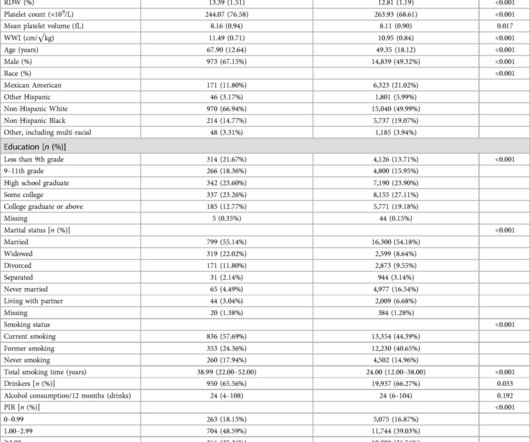
Frontiers in Cardiovascular Medicine
NOVEMBER 17, 2024
Multiple logistic regression and restricted cubic spline (RCS) analyses were conducted to assess both linear and nonlinear associations between WWI and myocardial infarction. Subgroup analyses and interaction tests were also performed.ResultsAmong the 31,535 participants analyzed, 1,449 (4.82%) had experienced a myocardial infarction.

Frontiers in Cardiovascular Medicine
JANUARY 22, 2024
The timely detection of myocardial fibrosis is crucial for intervention and improved outcomes. 68 Ga-FAPI-04 PET/CT shows promise in assessing fibroblast activation in patients with early myocardial infarction characterized by prolonged myocardial ischemia. The results demonstrated tracer-specific uptake (SUVmax = 4.6)
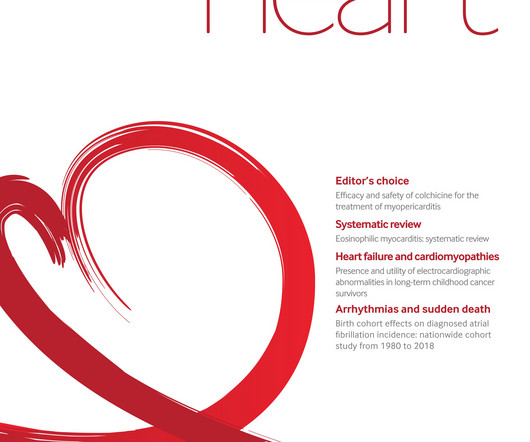
Heart BMJ
APRIL 25, 2024
Objective It is uncertain whether percutaneous coronary intervention (PCI) in addition to optimal medical therapy (OMT) can reduce adverse clinical events in the long term as compared with OMT alone in patients with pure stable angina. Methods We enrolled patients from 2006 to 2010 using the Korean national insurance data.
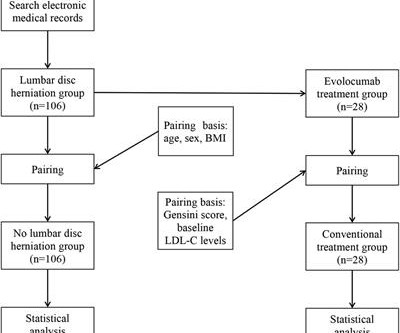
Frontiers in Cardiovascular Medicine
FEBRUARY 8, 2024
Methods In this study, a total of 212 patients (age 46–80 years) with unstable angina (UA) who underwent coronary angiography (CAG) in our hospital from January 2018 to July 2022 due to UA were included. Objective Assessing the impact of lumbar disc herniation (LDH) on the plaque burden of coronary atherosclerosis is our objective.

The New England Journal of Medicine
DECEMBER 20, 2023
The primary aim of treating patients with stable angina is to decrease symptoms and improve quality of life. Percutaneous coronary intervention (PCI), a treatment for patients with angina, does not reduce the risk of death from any cause, death from cardiac causes, or myocardial infarction.1 1 In this issue.
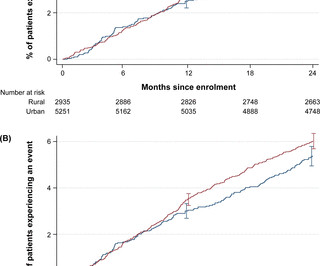
Open Heart
AUGUST 21, 2023
Background Insights on the differences in clinical outcomes, quality of life (QoL) and health resource utilisation (HRU) with different levels of care available to post-acute myocardial infarction (AMI) populations in rural and urban settings are limited. Data were collected at baseline and every 6 months for 24 months.
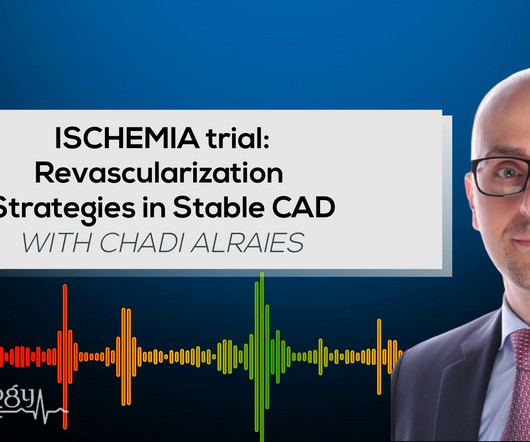
Cardiology Update
MARCH 5, 2024
The study utilized the ISCHEMIA primary outcome, a composite measure of cardiovascular death, protocol-defined myocardial infarction, or hospitalization for unstable angina, heart failure, or resuscitated cardiac arrest. years, with 57.1% occurring within 30 days after CABG.

European Journal of Cardiovascular Nursing
FEBRUARY 17, 2025
Abstract Aim Sense of coherence (SOC) allows individuals to be more resilient to adverse life events and it is associated with quality of life (QoL), but its long-term effects are unknown in patients with myocardial infarction. Data were analysed with repeated measure ANOVA and linear regression.

Cardiology Update
MARCH 4, 2024
The primary outcome was a composite of death from any cause, myocardial infarction, or hospitalization for unstable angina at 2 years. High-risk PCI patients were randomized to routine functional testing at 1 year or standard care alone during follow-up. The analysis composed of participants with multivessel or left main CAD.
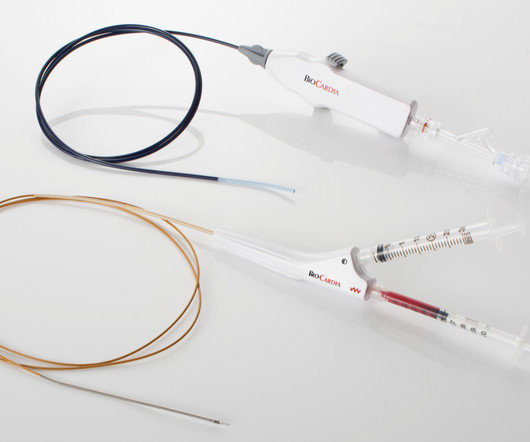
DAIC
JULY 17, 2024
All of the biotherapeutic interventions we support for treatment of heart failure, refractory angina, and acute myocardial infarction going forward are expected to utilize this same introducer technology platform,” said Peter Altman, PhD , BioCardia’s President and Chief Executive Officer.
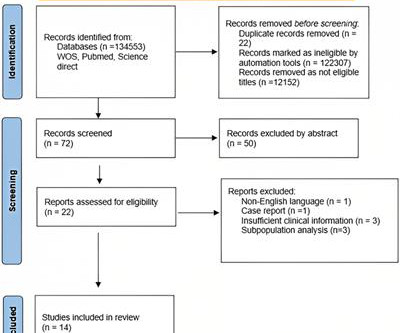
Frontiers in Cardiovascular Medicine
JANUARY 15, 2024
of the patients were diagnosed with non-ST elevated myocardial infarction (NSTEMI), 36.8% with ST elevated myocardial infarction (STEMI), 3.41% with unstable angina, 0.56% with stable angina, and 0.11% were diagnosed with various types of arrhythmias. Approximately 48.5%

NEJM Journal Watch - Cardiology
FEBRUARY 25, 2025
Computed tomographic angiographyguided management lowered incidence of myocardial infarction and death, but invasive angiography rates were similar.

DAIC
JULY 31, 2024
All of the biotherapeutic interventions we support for treatment of heart failure, refractory angina, and acute myocardial infarction are expected to utilize this same introducer technology platform,” said Peter Altman, PhD , BioCardia’s President and Chief Executive Officer.

Circulation
NOVEMBER 11, 2024
This study investigates the relationship between baseline 5-HTP levels and the incidence of major adverse cardiovascular events (MACE) in patients who have experienced ST-elevation myocardial infarction (STEMI).Objective:Our years, 53 women) followed for up to 15 years.

Circulation
FEBRUARY 12, 2024
years, and low baseline prevalence of cardiovascular disease (myocardial infarction, 5.1%; cerebrovascular accident, 2.0%) were followed for a median of 5 years. METHODS:A total of 5047 participants with a mean±SD age of 57.2±10.0 years, type 2 diabetes duration of 4.0±2.7

Dr. Smith's ECG Blog
APRIL 22, 2024
Patient is pain free and clearly has Wellens' syndrome: 1) pain free episode following an episode of angina, typical Pattern A (biphasic, terminal T-wave inversion with an initial upsloping ST Segment) findings, preserved R-waves. Electrocardiographic diagnosis of reperfusion during thrombolytic therapy in acute myocardial infarction.

Dr. Smith's ECG Blog
MARCH 13, 2024
By definition , this is acute myocardial infarction, the only question now is the etiology. It is not clear exactly what symptoms the patient may have been experiencing at this time, but the notes indicate that he then developed "worsening" pain, suggesting he had likely had ongoing angina the whole time.
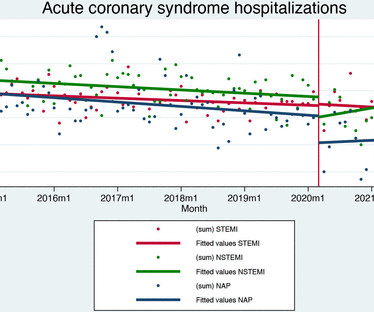
Open Heart
NOVEMBER 20, 2023
Data on 21 001 patients were included (7057 ST-elevation myocardial infarction (STEMI), 7649 non-ST elevation myocardial infarction (NSTEMI) and 6295 unstable angina). Data were fitted to segmented regression models with March 2020 as the breakpoint.

DAIC
MAY 14, 2024
The impact of this narrowing can ultimately result in angina (chest pain), which has been shown to double the risk of major cardiovascular events,1 as well as myocardial infarction ( heart attack ) or even death. Use Heart to Act on Angina. Available at: [link]. Accessed May 2024.
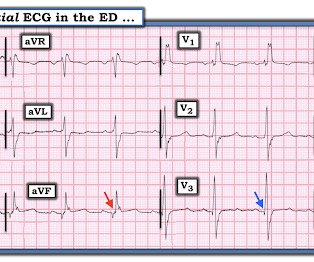
Dr. Smith's ECG Blog
JANUARY 31, 2020
A middle-aged man complained of 15 minutes of classic angina that resolved upon arrival to the ED. So this is indeed diagnostic of myocardial infarction. Not immediately, at least, because this is NOT diagnostic of ACUTE (occlusion) myocardial infarction (Acute OMI). Here is his initial ECG: What do you think?
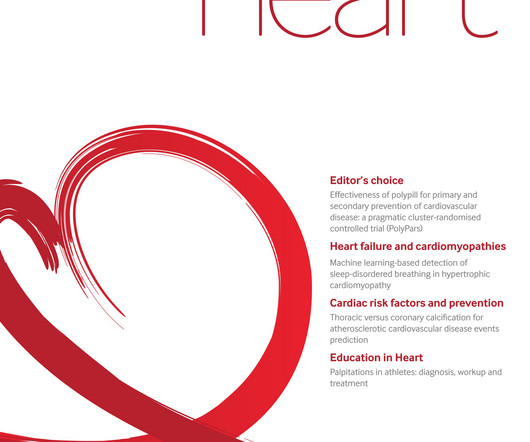
Heart BMJ
JUNE 25, 2024
The primary outcome was the first occurrence of major cardiovascular events defined as a composite of hospitalisation for acute coronary syndrome (non-fatal myocardial infarction and unstable angina), fatal myocardial infarction, non-fatal and fatal stroke, sudden death and heart failure.
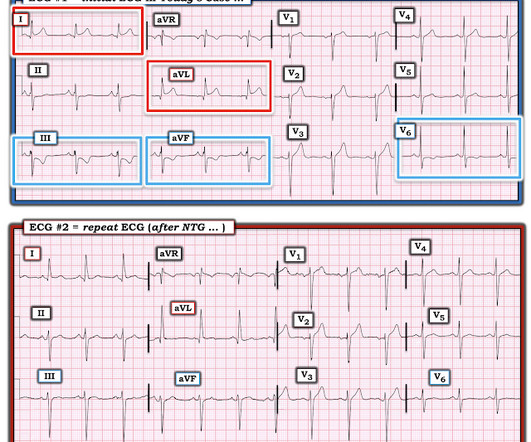
Dr. Smith's ECG Blog
SEPTEMBER 18, 2024
Thus, it has recently become generally accepted that most plaque ruptures resulting in myocardial infarction occur in plaques that narrow the lumen diameter by 40% of the arterial cross section may be involved by plaque. This confirms that the pain was ischemia and is now resovled. The i nitial hs troponin I returned 75%.
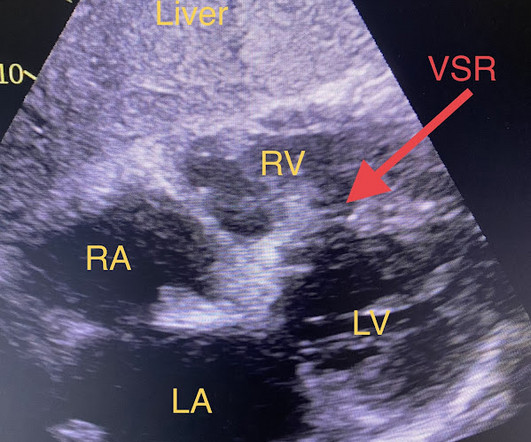
Dr. Smith's ECG Blog
SEPTEMBER 5, 2024
This is a value typical for a large subacute MI, n ormal value 48 hours after myocardial infarction is associated with Post-Infarction Regional Pericarditis ( PIRP ). Mechanical complications secondary to myocardial infarction are infrequent due to most patients receiving revascularization quite rapidly.

DAIC
FEBRUARY 29, 2024
ET Main Tent (Hall B1) - A Double-blind, Randomized Placebo Procedure-controlled Trial of an Interatrial Shunt in Patients with HFrEF and HFpEF: Principal Results From the RELIEVE-HF Trial - Empagliflozin After Acute Myocardial Infarction: Results of the EMPACT-MI Trial - CSL112 (Apolipoprotein A-I) Infusions and Cardiovascular Outcomes in Patients (..)
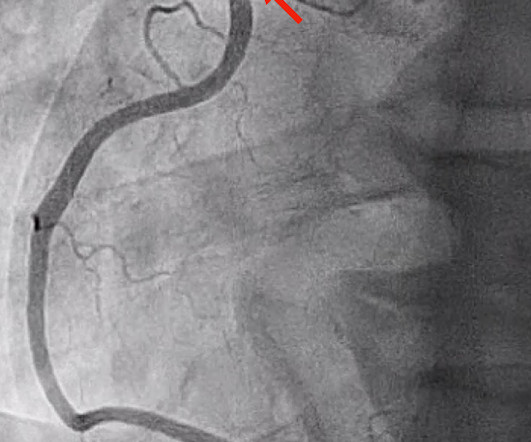
Dr. Smith's ECG Blog
MARCH 17, 2024
Answer: This is MINOCA -- Myocardial Infarction with Non-Obstructive Coronary Arteries. Comprehensive coronary evaluation (with testing for vasospasm and microvascular dysfunction) was shown in the randomized trial CorMicA to significantly improve angina, quality of life, and diagnostic accuracy. The name is self-explanatory.
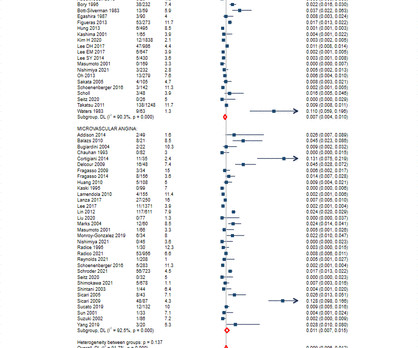
Open Heart
OCTOBER 1, 2024
Background The prognosis of myocardial ischaemia with no obstructive coronary artery disease (INOCA) and its underlying vasomotor disorders, vasospastic angina (VSA) and microvascular angina (MVA), is not well defined.
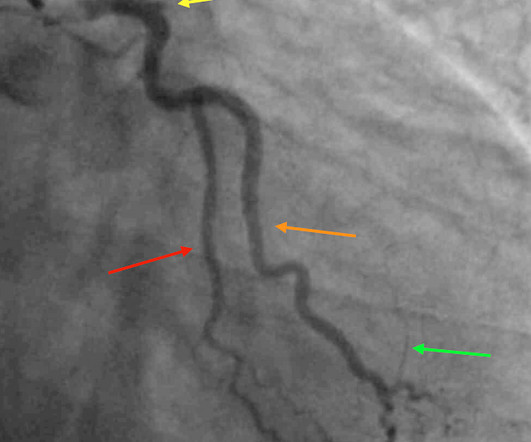
Dr. Smith's ECG Blog
AUGUST 9, 2024
The patient was given aspirin, heparin, morphine, and ondansetron and and transferred to a PCI-capable facility for a diagnosis of "unstable angina" with dynamic ECG changes. AIVR is not always the result of significant pathology, but is classically associated with the reperfusion phase of acute myocardial infarction.

The British Journal of Cardiology
JUNE 11, 2024
Manifestations of CVDs, such as chest pain, abnormal serum markers, unstable angina, myocardial infarction (MI), myocarditis, and new-onset hypertension, were documented. Unstable angina, MI, and myocarditis were, respectively, diagnosed in 20 (2.8%), five (0.7%), and 12 (1.7%) patients.
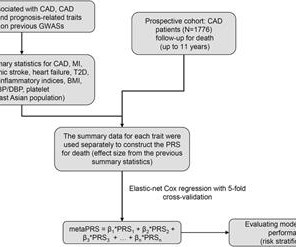
Frontiers in Cardiovascular Medicine
FEBRUARY 12, 2024
Their correlations with all-cause death were computed via Cox regression.
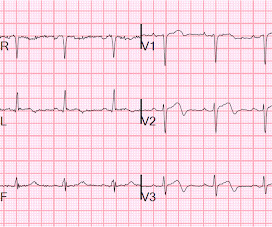
Dr. Smith's ECG Blog
MARCH 9, 2013
In my experience, all Wellens' with significant myocardial infarction have evolution from type A waves to type B waves over 6-24 hours' time , so that the presence of type A or type B waves, I believe, are simply a matter of the timing of recording and the rapidity of evolution. Lessons: 1. de Zwaan C., Janssen J.H.A., de Zwaan C.,

Dr. Smith's ECG Blog
JANUARY 5, 2024
So there is probability of myocardial injury here (and because it is in the correct clinical setting, then myocardial infarction.) Thus, the patient does not (yet) get a formal diagnosis of MI and must be called unstable angina unless further troponins return above the 99th percentile. Repeat ECG is shown below.
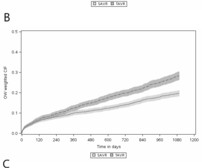
Open Heart
APRIL 27, 2023
Hazards of myocardial infarction and readmission for angina at 1, 3 and 5 years were significantly greater for TAVR. All-cause mortality at 1 year (HR 1.21; 95% CI 1.02 to 1.43), 3 years (HR 1.45; 95% CI 1.28 to 1.64) and 5 years (HR 1.48; 95% CI 1.33

Open Heart
AUGUST 25, 2024
Background On the one hand, the primary coronary slow flow phenomenon (CSFP) can cause recurrence of chest pain, prompting medical examinations and further healthcare costs, while on the other hand, it can lead to myocardial infarction, ventricular arrhythmia and sudden cardiac death.
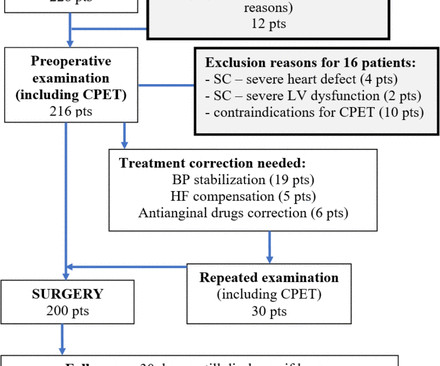
Open Heart
JULY 15, 2022
Results 200 patients (mean age 68±14.2 years) met inclusion and exclusion criteria: oesophageal surgery 54 pts, gastric surgery 132 pts and combined oesophageal/gastric surgery 14 pts. to 22.47).

Cardiology Update
APRIL 9, 2024
EMPACT-MI 1 ( NCT04509674 ) studied the effects of empagliflozin in patients who have experienced myocardial infarction (MI). The primary endpoint consisted of a composite of all-cause mortality, MI, stroke, coronary revascularization, or hospitalization for unstable angina. Here is our curated list of the top sessions.
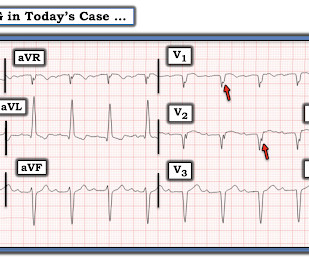
Dr. Smith's ECG Blog
APRIL 18, 2024
Non-STEMI guidelines call for “urgent/immediate invasive strategy is indicated in patients with NSTE-ACS who have refractory angina or hemodynamic or electrical instability,” regardless of ECG findings.[1] 1] European guidelines add "regardless of biomarkers". But only 6.4% Clin Cardiol 2022 4. Herman, Meyers, Smith et al. McLaren and Smith.

Circulation
NOVEMBER 11, 2024
All-cause hospitalization (HR: 2.31, 95%CI: 2.04 – 2.62, p<0.001), heart failure hospitalization (HR: 2.22, 95%CI: 1.92 – 2.55, p<0.001), acute myocardial infarction (HR: 2.06, 95%CI: 1.79 – 2.35, p<0.001), unstable angina (HR: 2.28, 95%CI: 1.72-3.04,

The British Journal of Cardiology
APRIL 16, 2024
We present the cumulative percutaneous coronary intervention (PCI) data of all comers (stable angina and acute coronary syndromes [ACS]) who presented to Hadi Clinic between January 2018 and December 2020. The radial approach was used in 544/567 (95.94%), the average SYNTAX score was 34.8 ± 9.6, and the average number of stents 2.6.
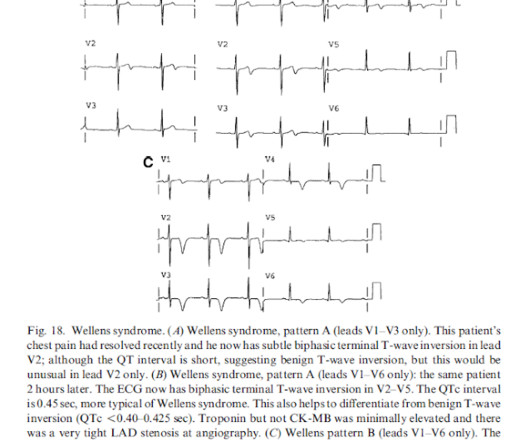
Dr. Smith's ECG Blog
NOVEMBER 15, 2013
As hours go by, these T inversions always evolve , [unless 1) there is re-occlusion, in which case they go upright and become hyperacute, with or without additional ST elevation, ("pseudonormalize") or 2) no infarction at all (negative troponin, true unstable angina with dynamic T-waves, in which they may normalize). Jernberg T, et al.
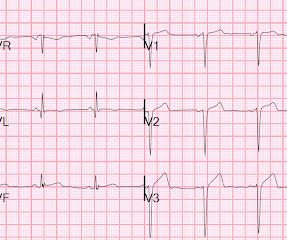
Dr. Smith's ECG Blog
MARCH 11, 2016
A middle-aged woman had intermittent angina for 48 hours, then onset of constant, crushing chest pain for 1.5 Appearance of abnormal Q waves early in the course of acute myocardial infarction: implications for efficacy of thrombolytic therapy. hours when she called 911. These do NOT indicate late, subacute MI. Raitt MH, et al.

Frontiers in Cardiovascular Medicine
FEBRUARY 27, 2024
Patients with a new or recurrent episode of ASCVD (angina, acute myocardial infarction, transient ischemic attack, stroke, or peripheral arterial disease) between 1-Jan-2017 and 31-Dec-2018 were included.

Dr. Smith's ECG Blog
OCTOBER 24, 2018
Therefore, this does not meet the definition of myocardial infarction ( 4th Universal Definition of MI ), which requires at least one troponin above the 99% reference range. This was clearly severe subepicardial ischemia causing ST Elevation, but it was not of a long enough duration to result in measurable infarct.
Expert insights. Personalized for you.
We have resent the email to
Are you sure you want to cancel your subscriptions?


Let's personalize your content